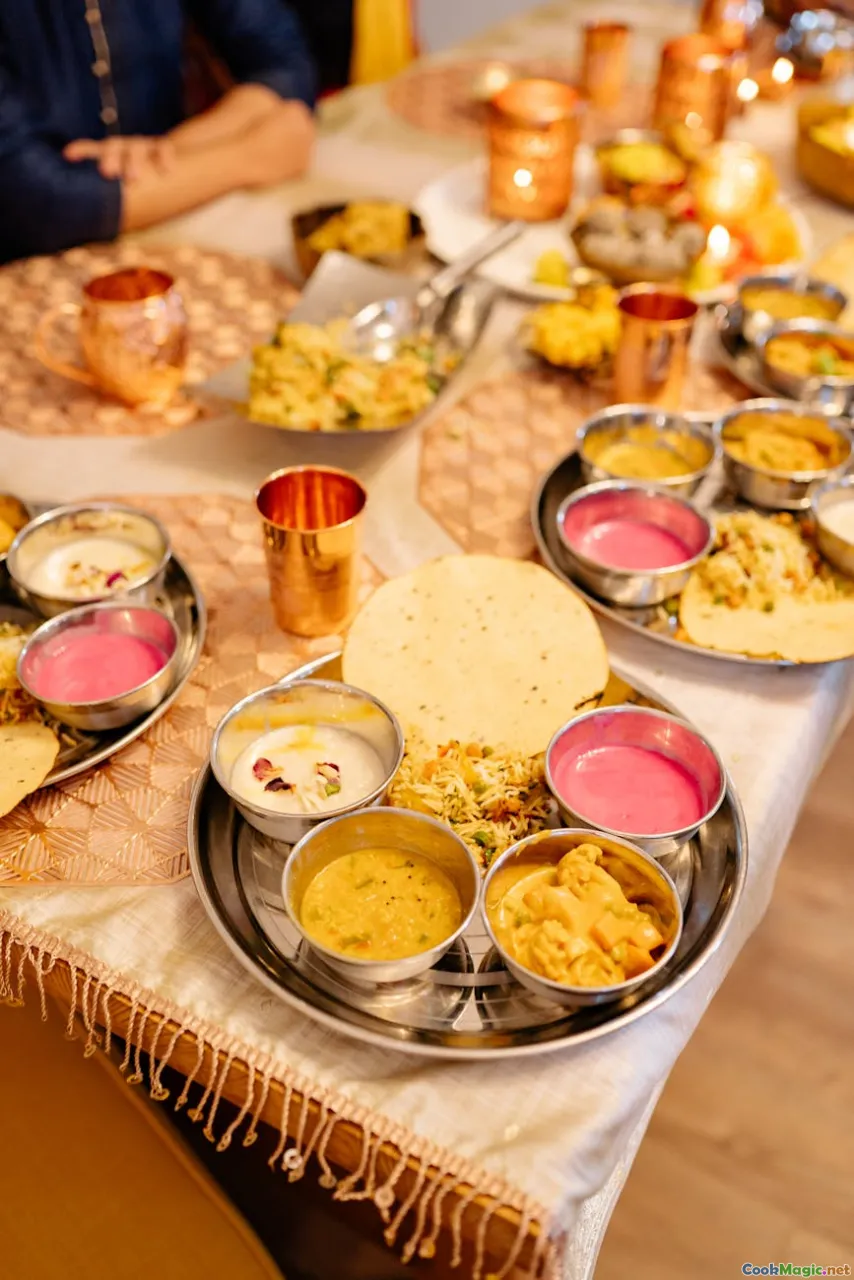Structuring an Authentic Bangladeshi Wedding Feast
8 min read Explore the rich tapestry of flavors, traditions, and meticulous planning behind crafting an authentic Bangladeshi wedding feast that embodies cultural grandeur and culinary excellence. May 22, 2025 06:00
Structuring an Authentic Bangladeshi Wedding Feast
Imagine walking into a vibrant wedding hall in Dhaka or a serene rural village, where the air is thick with the aroma of spices, the sound of cheerful chatter, and the sight of colorful decorations. The centerpiece of this celebration is not just the union of two souls but a feast that epitomizes the rich culinary heritage of Bangladesh. Crafting an authentic Bangladeshi wedding feast is an art—an intricate tapestry woven with history, culture, and flavors that tell stories of generations.
The Cultural Significance of a Bangladeshi Wedding Feast
In Bangladesh, weddings are more than just ceremonies; they are cultural spectacles that celebrate community, tradition, and identity. The feast, known locally as "Bhoj" or "Bhoj-bhater," is a vital component that symbolizes prosperity, happiness, and the sharing of blessings. It’s a reflection of the region’s agricultural bounty, centuries-old recipes, and the social fabric that binds families.
Food at a Bangladeshi wedding is a sensory journey—each dish has a story, a technique, and a purpose. From the auspicious beginning with traditional rituals to the grand finale of sweet treats, every element is carefully curated to honor tradition while delighting the palate.
Planning the Structure of the Wedding Feast
1. The Rituals and Timing
Before diving into the menu, understanding the sequence of events is essential. A typical wedding day might include the Gaye Holud (turmeric ceremony), Nikah (marriage contract), and Walima (wedding banquet). The feast usually follows the Nikah and Walima, serving as the climax of the celebrations.
Timing influences the type of dishes served—light and refreshing options for daytime events, richer, spiced dishes for evening celebrations.
2. The Core Components of the Feast
An authentic Bangladeshi wedding feast is characterized by a harmonious balance of flavors—spicy, tangy, sweet, and savory—crafted to cater to a diverse palate.
a. Rice: The Foundation
Rice is the heart of Bangladeshi cuisine. Basmati or local varieties like Kataribhog or Chinigura are cooked to perfection—fluffy, aromatic, and served as the main staple. Often, multiple types of rice are offered, including plain steamed rice (Chira), Pulao (fragrant rice with spices and meat), and Khichuri (a comforting rice and lentil dish).
b. Main Curries and Proteins
- Beef and Mutton Curry: Slow-cooked with spices, onions, and garlic, these curries develop a rich, tender texture and deep flavor.
- Fish Delights: Fish holds a special place, with dishes like Bhuna Ilish (Hilsa cooked with mustard seeds and spices) or Chingri Malai Curry (prawn coconut curry).
- Chicken Preparations: Morog Malai Korma (chicken in coconut milk) or Paneer for vegetarian options.
c. Vegetables and Sides
Vegetables are prepared in various forms: stir-fried, pickled, or in curries. Popular choices include Shutki Bhuna (fermented dried fish), Begun Bharta (mashed eggplant), and Chingri Malai Curry. Pickles (Achar) and salads add a tangy crunch.
d. Lentils and Dal
A variety of lentil preparations like Dal or Cholar Dal (split chickpeas with coconut and spices) accompany the meal, providing warmth and balance.
3. The Grand Array of Sides and Snacks
- Pappadums and Crisps: Light and crispy, perfect for nibbling.
- Fuchka (Puchka): Spicy tamarind water-filled hollow puris that invigorate the palate.
- Begun Bharta or Aloo Bharta: Mashed roasted eggplant or potatoes seasoned with mustard oil and green chilies.
4. The Sweet Endings
A wedding feast isn’t complete without an array of traditional sweets:
- Roshogolla: Soft cheese balls soaked in sugar syrup.
- Sandesh: Delicate milk-based sweets flavored with cardamom.
- Pitha: Traditional rice cakes, such as Chitoi Pitha or Bhapa Pitha, often filled with jaggery and coconut.
- Kheer and Payesh: Rich rice pudding flavored with cardamom and topped with nuts.
The Art of Serving and Presentation
In Bangladeshi culture, the presentation of the feast is as important as the food itself. Banana leaves or large communal platters (Thali) are common, fostering a sense of community and sharing. The serving order is deliberate—appetizers and starters first, followed by main courses, then sweets.
A typical serving involves a host or a server guiding guests through the courses, emphasizing hospitality and warmth. The aroma of freshly cooked dishes, the vibrant colors of vegetables and sweets, and the rhythmic clatter of utensils create an immersive experience.
Personal Touches and Modern Twists
While tradition reigns supreme, many modern Bangladeshi weddings incorporate contemporary elements—fusion dishes, vegetarian adaptations, or themed presentations—without losing the essence of authenticity.
For example, chefs might infuse local spices into international cuisines or serve handcrafted desserts with a modern aesthetic, all while honoring age-old recipes.
Reflections on the Experience
Preparing and experiencing a Bangladeshi wedding feast is more than just about food; it’s about celebrating life, love, and community through a symphony of flavors. Each dish, each ritual, echoes centuries of history and cultural pride.
From the first fragrant whiff of simmering spices to the sweet satisfaction of a well-loved Roshogolla, this feast embodies the spirit of Bangladesh—warm, vibrant, and full of life.
Final Thoughts
Structuring an authentic Bangladeshi wedding feast demands a careful balance of tradition, culinary artistry, and heartfelt hospitality. It’s a celebration that feeds the body and soul, creating memories that linger long after the last sweet has been savored. Whether you are a host, a chef, or an enthusiastic guest, understanding the depth and nuance of this culinary tradition opens a window into the rich cultural tapestry of Bangladesh—inviting you to partake in a timeless feast of love and flavor.









